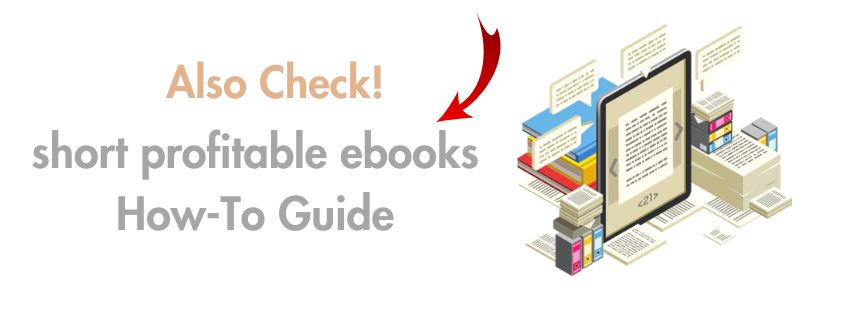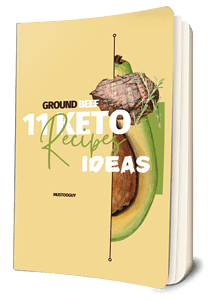List Of Amazon Categories And Subcategories: 9 Crucial Steps To Thrive
This guide outlines 10 crucial steps that will empower you to efficiently explore the extensive list of Amazon categories and subcategories to uncover lucrative self-publishing opportunities. You can enhance your strategy by learning How to Choose Amazon Book Categories – Self-publishing, ensuring you make informed decisions tailored to your unique writing goals.
1 List Of Amazon Categories and Subcategories
The first step in your exploration process is to identify Amazon categories that align with your interests and expertise. Begin by browsing the Amazon marketplace to familiarize yourself with the various categories available, such as Fiction, Non-Fiction, Children’s Books, and more.
Take the time to analyze the bestsellers in those categories; this will help you understand trends and customer preferences. By identifying your target categories, you’ll be better positioned to find self-publishing niches that resonate with your audience and stand out in a competitive marketplace. Also check these 9 best categories!
- Relevance: Spot-on. The first step in self-publishing is identifying the right Amazon categories for your eBook. It’s crucial to narrow down your genre and choose subcategories where your book will have the most visibility and less competition.
- Real-Life Example: If you’re writing a romance novel, instead of choosing the broad category “Romance,” you might target a subcategory like “Romantic Suspense” or “New Adult & College Romance.”
- Adjustment: No adjustment needed here, this is a solid first step.
2 Research Bestselling Books
To effectively navigate Amazon categories and identify lucrative self-publishing niches, you should start by examining bestselling books in your areas of interest. Analyze their content, cover design, and customer reviews to understand what resonates with readers. Pay attention to the keywords and phrases used in their titles and descriptions, as these can reveal popular trends and effective marketing strategies. By gathering insights from successful titles, you’ll be better positioned to create your own standout book that appeals to a similar audience, increasing your chances of achieving strong sales.
- Relevance: Essential. Studying bestselling books in your niche will give insights into what readers are buying and what types of covers, titles, and content formats are successful.
- Real-Life Example: Check out “The Subtle Art of Not Giving a Fck”* by Mark Manson, which dominates the self-help category. Its unique voice and no-nonsense approach stand out in a crowded niche, teaching aspiring authors how to differentiate their content.
- Adjustment: Ensure you look at recent bestsellers to keep up with current trends.
3 Analyze Customer Reviews
While exploring your chosen niches, take the time to analyze customer reviews for existing books in those categories. This practice helps you understand what readers appreciate and what they find lacking. Pay attention to recurring themes or specific critiques mentioned in the reviews, as these insights can guide you in crafting a book that fills gaps in the market. Additionally, by identifying common keywords and phrases used by readers, you can enhance your own book’s description and marketing strategy, ultimately attracting a more engaged audience to your work.
- Relevance: Very important. Analyzing customer reviews can reveal what readers love and what they don’t. You’ll learn common pain points and what to include or avoid in your book.
- Real-Life Example: Reviews of “Atomic Habits” by James Clear often mention the practical advice and actionable tips, while some negative reviews note repetitive content. Aspiring authors in the self-help space can use this feedback to improve their work.
- Adjustment: Focus equally on both positive and negative reviews for a well-rounded understanding.
4 Investigate Niche Competitors
Any successful self-publishing journey starts with understanding your niche competitors. Dive deep into their offerings and analyze what makes them stand out. Look for patterns in their book covers, pricing, and marketing strategies.
By grasping what works for them, you can better position your own titles for success. If you’re uncertain about which niche to target, consider exploring this question on As a beginner what niche I should choose in kdp? to gain insights from experienced authors.
- Relevance: Critical. Studying competitors in your niche can reveal gaps in the market or ideas for improving your content. Investigate what topics they cover, their pricing strategies, and their promotional methods.
- Real-Life Example: In the “business and finance” niche, “Rich Dad Poor Dad” by Robert Kiyosaki has countless imitators, but authors who focus on untapped angles (like financial literacy for teenagers) have found success by differentiating themselves.
- Adjustment: Look for underserved niches or subtopics with fewer competitors to stand out.

5 Assess Keyword Popularity
Even the best niche can fall flat without the right keywords. To effectively assess keyword popularity, utilize tools like Google Keyword Planner or Amazon’s own search bar to identify terms that customers frequently search for. Pay attention to search volumes, competition levels, and related keywords that can guide your content strategy.
By aligning your self-published work with popular search trends, you increase your chances of visibility and sales. Keeping your finger on the pulse of keyword popularity allows you to adapt and refine your approach over time, ensuring your efforts are directed where they matter most.
- Relevance: Highly relevant. Understanding which keywords are being searched for on Amazon will help you rank your book higher in search results. This step ensures your book appears where potential buyers are looking.
- Real-Life Example: If you’re publishing in the health niche, terms like “intermittent fasting” or “keto diet” are popular keywords. A book titled “Complete Guide to Keto Diet” by Leanne Vogel uses this keyword strategy effectively.
- Adjustment: Consider using tools like Publisher Rocket or Amazon Keyword Tool to assess keyword demand more precisely.
6 Explore Author Communities
Now, immerse yourself in author communities to connect with like-minded individuals who share your passion for writing and publishing. These groups, whether online or local, provide invaluable support, feedback, and inspiration. Engage in discussions, ask questions, and share your experiences to enhance your understanding of various niches.
By networking with other authors, you can gain insights into current trends, hot topics, and successful self-publishing strategies that resonate with your target audience. Building these connections can open doors to collaborations and opportunities that will enhance your writing journey.
- Relevance: Important. Engaging in online author communities can provide insider tips, networking opportunities, and promotional help. These communities offer valuable support, feedback, and marketing strategies.
- Real-Life Example: Self-published authors like Joanna Penn, who is active in communities like 20Booksto50K on Facebook, often share their success stories, marketing tips, and promotional techniques.
- Adjustment: Ensure that you participate in reputable and active author communities, both on Facebook and other platforms like KBoards or Reddit.
7 Check Trends and Seasons
You should pay close attention to trends and seasonal changes that affect your chosen categories. Analyzing popular keywords and search terms can provide insight into what customers are currently interested in.
Utilize tools like Google Trends or Amazon’s Best Sellers to gauge the popularity of specific niches at different times of the year. By aligning your self-publishing efforts with these trends, you can better position your work to meet market demands and increase visibility, making your books more appealing to potential buyers.
- Relevance: Very relevant. Understanding trends and seasonal demand can greatly affect your book’s success. Some niches experience spikes during certain times of the year (e.g., fitness books in January, holiday cookbooks in November/December).
- Real-Life Example: Self-published Christmas romance novels tend to surge in November and December. An author who targets these seasonal trends can time their marketing and promotions to maximize sales.
- Adjustment: Use tools like Google Trends or the Kindle Best Sellers list to spot emerging topics and plan for seasonality.
8 Use Amazon Tools
Once again, harness the power of Amazon’s built-in tools to aid your exploration of categories and niches. The Amazon Best Sellers page is a treasure trove, showcasing trending books and giving you insights into what readers are currently interested in.
Additionally, Amazon Keywords Tool can help you identify popular search terms in your potential niches, enhancing your visibility. Utilizing these resources, you can refine your ideas and ensure they align with market demand, making your self-publishing journey more strategic and informed.
- Relevance: Crucial. Amazon provides tools that can assist authors, such as KDP (Kindle Direct Publishing) for self-publishing, and Amazon Advertising for promotion. Additionally, tools like “Look Inside” allow readers to preview your book, improving conversion rates.
- Real-Life Example: Authors like Nick Stephenson use Amazon’s advertising tools to run targeted ads that have helped scale their book sales.
- Adjustment: Ensure you’re also using KDP Select to take advantage of promotional opportunities like free book promotions and Kindle Unlimited.
9 Evaluate Profitability Potential
All successful self-publishers understand the importance of assessing profitability potential in their chosen niche. Begin by analyzing market trends, identifying products that not only interest you but also display strong sales performance.
Utilize tools like Amazon’s Best Sellers Rank and keyword research to gauge demand and competition. Additionally, factor in production costs and potential pricing strategies to ensure revenue viability. By thoroughly evaluating these elements, you can strategically position your work to maximize earnings and fulfill reader needs.
- Relevance: Essential. After doing all of the above research, it’s important to assess whether the niche is profitable. You want to find niches that aren’t oversaturated but have high demand.
- Real-Life Example: For example, the “personal finance” niche has immense demand, but it is also extremely competitive. An author might choose to focus on a sub-niche like “finance for freelancers” to increase profitability potential.
- Adjustment: Use Amazon’s royalty calculator to estimate profits based on pricing strategies and assess potential returns before committing to a niche.
Conclusion
From above, you have gained valuable insights on the 10 crucial steps to explore the list of Amazon categories and self-publishing niches. By following these steps, you can effectively identify profitable opportunities tailored to your strengths and interests. Engaging in thorough research and analysis will empower you to make informed decisions that can lead to success in the self-publishing arena. Embrace this knowledge to confidently navigate Amazon’s vast marketplace and elevate your publishing journey.
FAQ
Q: What are some effective ways to identify profitable Amazon categories for self-publishing?
A: To identify profitable Amazon categories for self-publishing, start by analyzing current best-seller lists in various categories. Look for categories that have a healthy number of sales and a manageable level of competition. Utilizing tools like Amazon’s Best Sellers Rank (BSR) can help gauge the popularity of specific books. Additionally, explore customer reviews and feedback to pinpoint gaps in the market that your book could fill. Joining forums and social media groups focused on self-publishing can also provide insights into emerging trends and niches.
Q: How do I narrow down my options once I’ve explored multiple Amazon categories?
A: After exploring multiple categories, it’s important to narrow down your options to focus on those that align with your interests and expertise. Start by creating a shortlist of categories that resonate with you. Then, analyze these categories for potential, taking note of the audience demographic, competition levels, and seasonal trends. A great way to assess this is to look at keyword search volumes using tools like Google Trends or keyword planners, which will help to further refine your choices. Engaging with potential readers through surveys or social media can also offer insights into their desires and preferences.
Q: What role does keyword research play in finding self-publishing niches on Amazon?
A: Keyword research is fundamental when it comes to discovering self-publishing niches on Amazon. By identifying terms and phrases that potential readers are actively searching for, you can tailor your content to meet their needs. Use tools like Ahrefs, SEMrush, or even Amazon’s own search bar to find popular keywords related to your topic. Additionally, looking at long-tail keywords can help you tap into specific and underserved markets. Applying these keywords effectively in your book title, description, and metadata can significantly enhance your book’s visibility and sales potential on Amazon.




